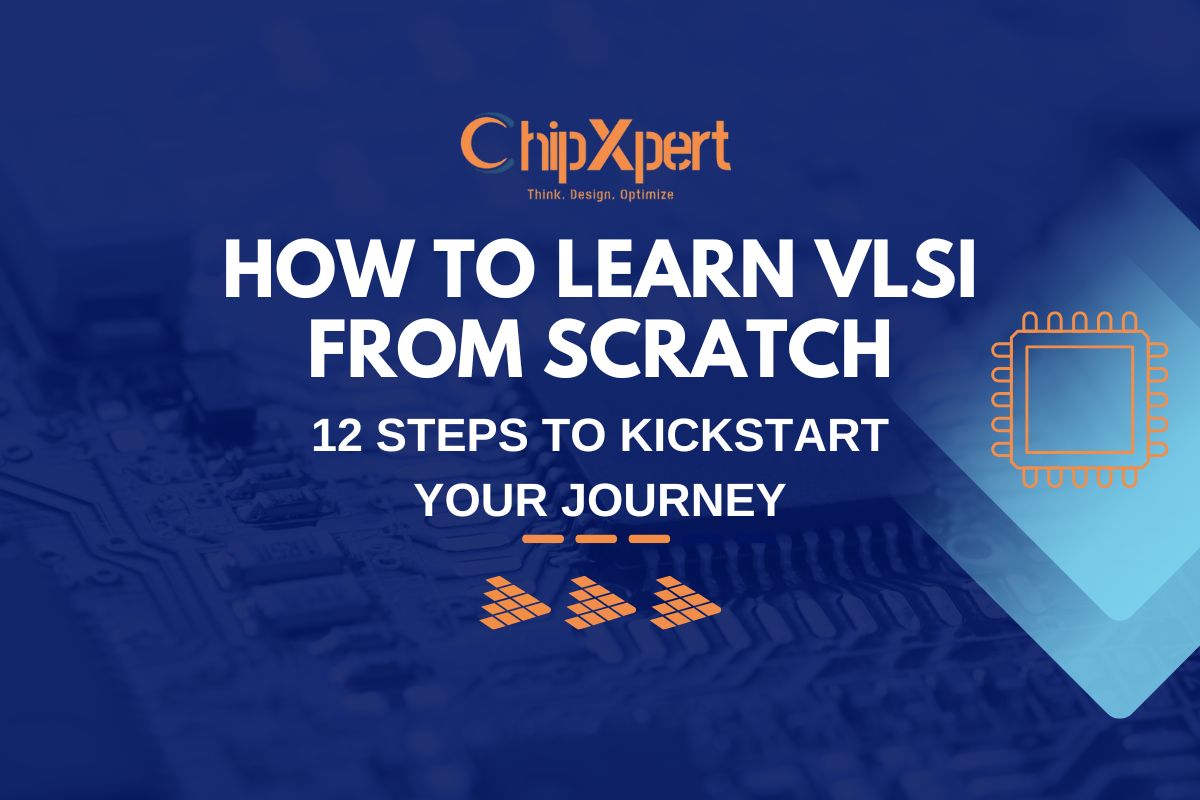How to Learn VLSI from Scratch: 12 Steps to Kickstart Your Journey
Learn VLSI (Very Large Scale Integration) from scratch can open doors to exciting roles like ASIC designer or verification engineer. VLSI design involves packing millions of transistors onto a single chip, powering devices like smartphones and AI systems. If you’re wondering how to dive into this high-demand field, this beginner-friendly guide outlines 12 practical steps to master VLSI design. Let’s get started on your path to becoming a chip design expert
Why Learn VLSI?
VLSI is the backbone of modern electronics, driving innovation in consumer electronics, automotive, and telecommunications. With India’s semiconductor market projected to reach $70–80 billion by 2026, skilled VLSI professionals are in high demand. Roles like FPGA engineer or physical design engineer offer rewarding careers with salaries 30% above average tech roles.
12 Steps to Learn VLSI from Scratch
1. Master Electronics Basics
VLSI builds on fundamental electronics. Start with concepts like voltage, current, Ohm’s Law, and Kirchhoff’s Laws. Understand passive components (resistors, capacitors) and semiconductors (diodes, MOSFETs). Resources like Electronic Devices and Circuit Theory by Boylestad or Khan Academy videos can help. A strong foundation here is key to grasping VLSI concepts.
2. Dive into Digital Logic Design
Digital circuits are the heart of VLSI. Learn Boolean algebra, logic gates (AND, OR, XOR), and logic simplification. Study flip-flops, multiplexers, and state machines. Books like Digital Design by Morris Mano or Coursera courses can solidify your understanding.
3. Understand VLSI Fundamentals
Get familiar with integrated circuits (ICs), including digital, analog, and mixed-signal types. Learn about CMOS technology, chip fabrication, and design methodologies like ASIC and FPGA. Free resources like Maven Silicon’s VLSI System-on-Chip Design course offer a great overview.
4. Learn Hardware Description Languages (HDLs)
Verilog and VHDL are essential for describing digital circuits. Start with Verilog due to its C-like syntax. Practice writing code for simple designs like counters or ALUs. Platforms like GUVI or Udemy offer beginner-friendly HDL courses with hands-on projects.
5. Get Hands-On with EDA Tools
Electronic Design Automation (EDA) tools like Vivado, Synopsys, or Cadence are industry standards. Learn to simulate, synthesize, and verify designs. Many tools offer free student versions. Enroll in courses like GUVI’s Certified VLSI Design Course for practical training.
6. Study CMOS Design
CMOS (Complementary Metal-Oxide-Semiconductor) is the core of VLSI chips. Understand transistor-level design, power optimization, and layout techniques. Books like CMOS VLSI Design by Neil Weste are excellent resources. Online tutorials on YouTube can complement your learning.
7. Explore the VLSI Design Flow
Learn the stages of VLSI design: specification, architecture, RTL coding, synthesis, and physical design. Understand processes like static timing analysis (STA) and place-and-route. Free courses from NPTEL or Maven Silicon break down each step clearly.
8. Practice with Projects
Hands-on experience is crucial. Build projects like a simple processor or memory unit using Verilog. Platforms like GUVI offer project-based learning, while GitHub lets you showcase your work. Start small and gradually tackle complex designs.
9. Join Online Courses
Structured courses accelerate learning. GUVI’s VLSI Design and Verification Course covers digital electronics, Verilog, and EDA tools, with an industry-recognized certificate. Alternatives include Coursera, edX, ChipXpert or Maven Silicon’s Advanced VLSI Design program.
10. Stay Updated with Industry Trends
Follow blogs like Semiconductor Engineering, attend conferences like DAC (Design Automation Conference), or read IEEE Transactions on VLSI. Join forums or LinkedIn groups to connect with professionals and learn about advancements like FinFET or chiplets.
11. Gain Practical Experience
Internships or research projects at semiconductor companies or universities provide real-world exposure. Competitions like VLSI design challenges also sharpen skills. Check platforms like Internshala or company career pages for opportunities.
12. Build a Portfolio and Network
Create a portfolio of your projects on GitHub or a personal website. Network with VLSI professionals on LinkedIn or at webinars. A strong portfolio and connections can land you roles in top firms like Intel or Micron.
Summary
Learning VLSI from scratch is a rewarding journey that blends theory, creativity, and hands-on practice. By following these 12 steps—starting with electronics basics, mastering HDLs, and building projects—you’ll be well-equipped for a thriving career in the semiconductor industry. Stay patient, leverage resources like GUVI’s VLSI Design Course, and keep practicing. Your dream job as a VLSI designer is within reach in 2025



